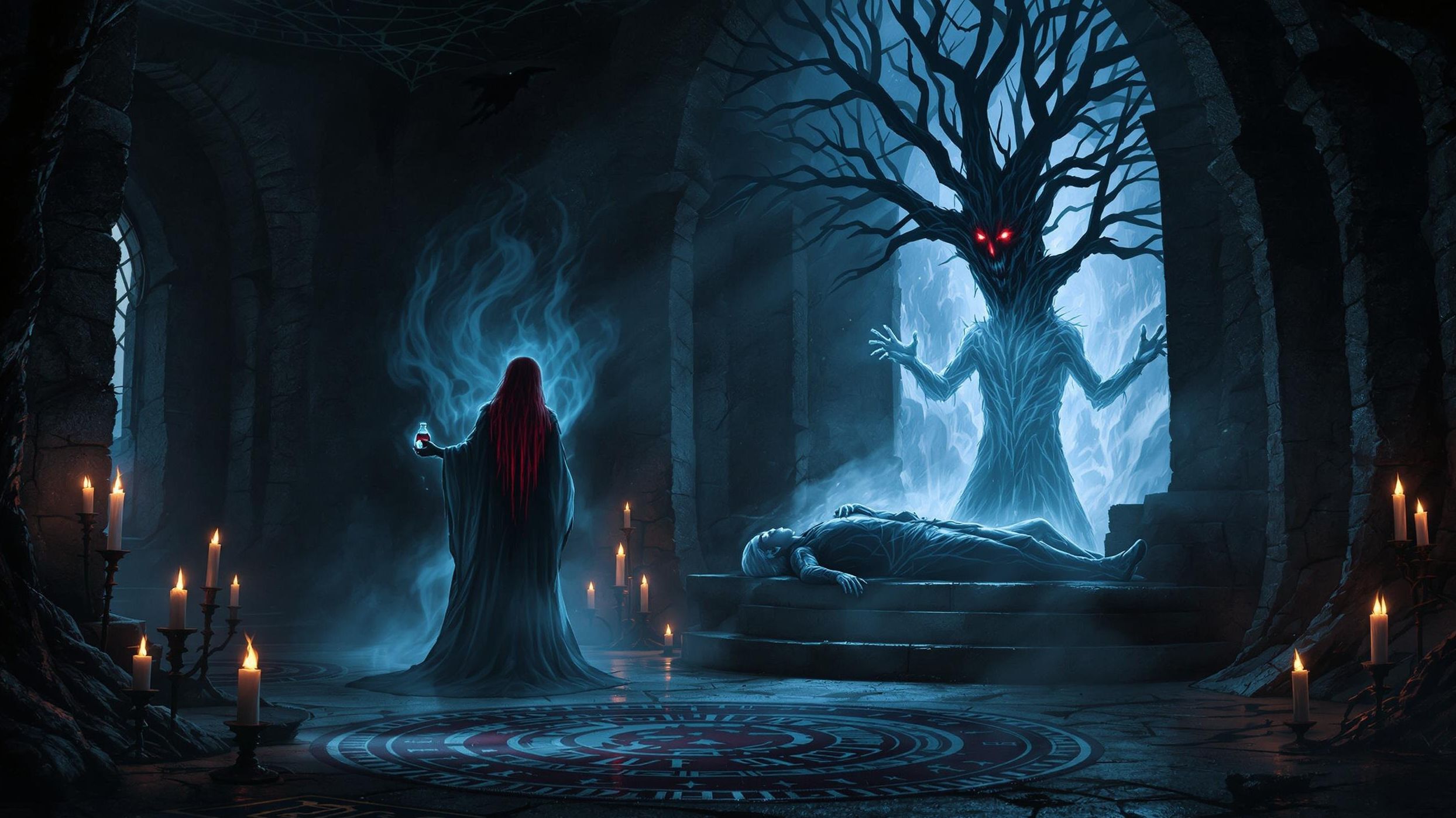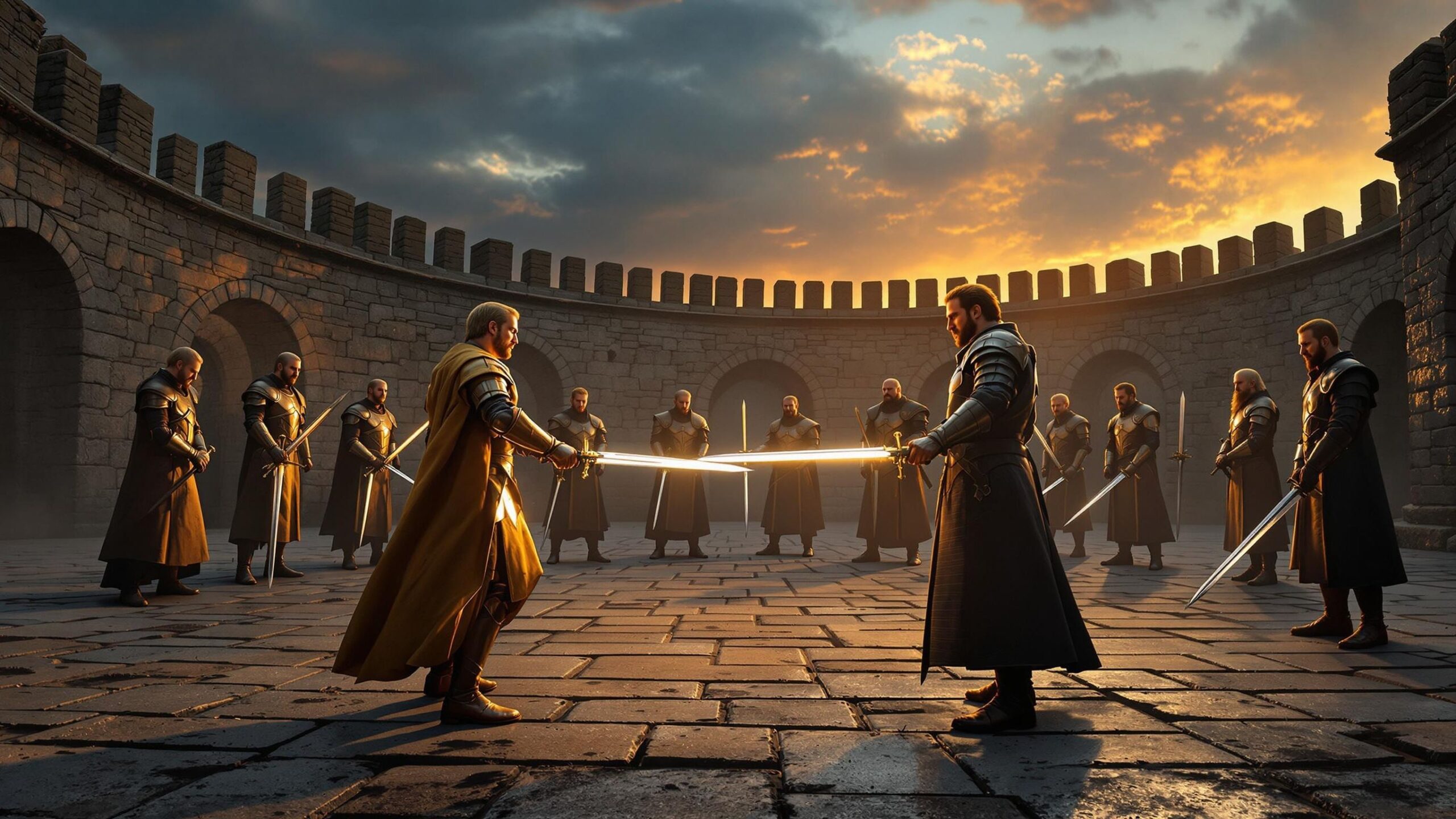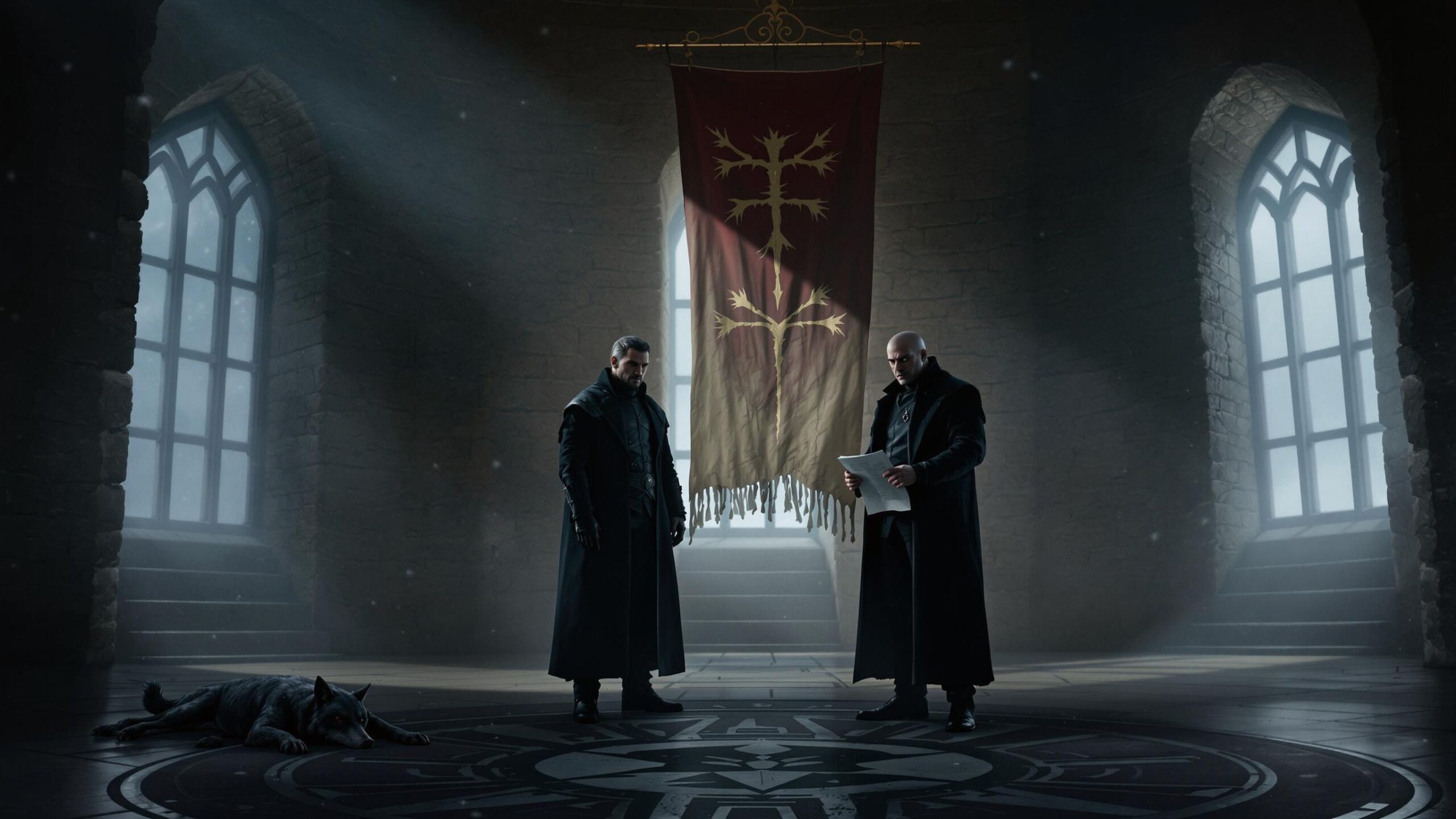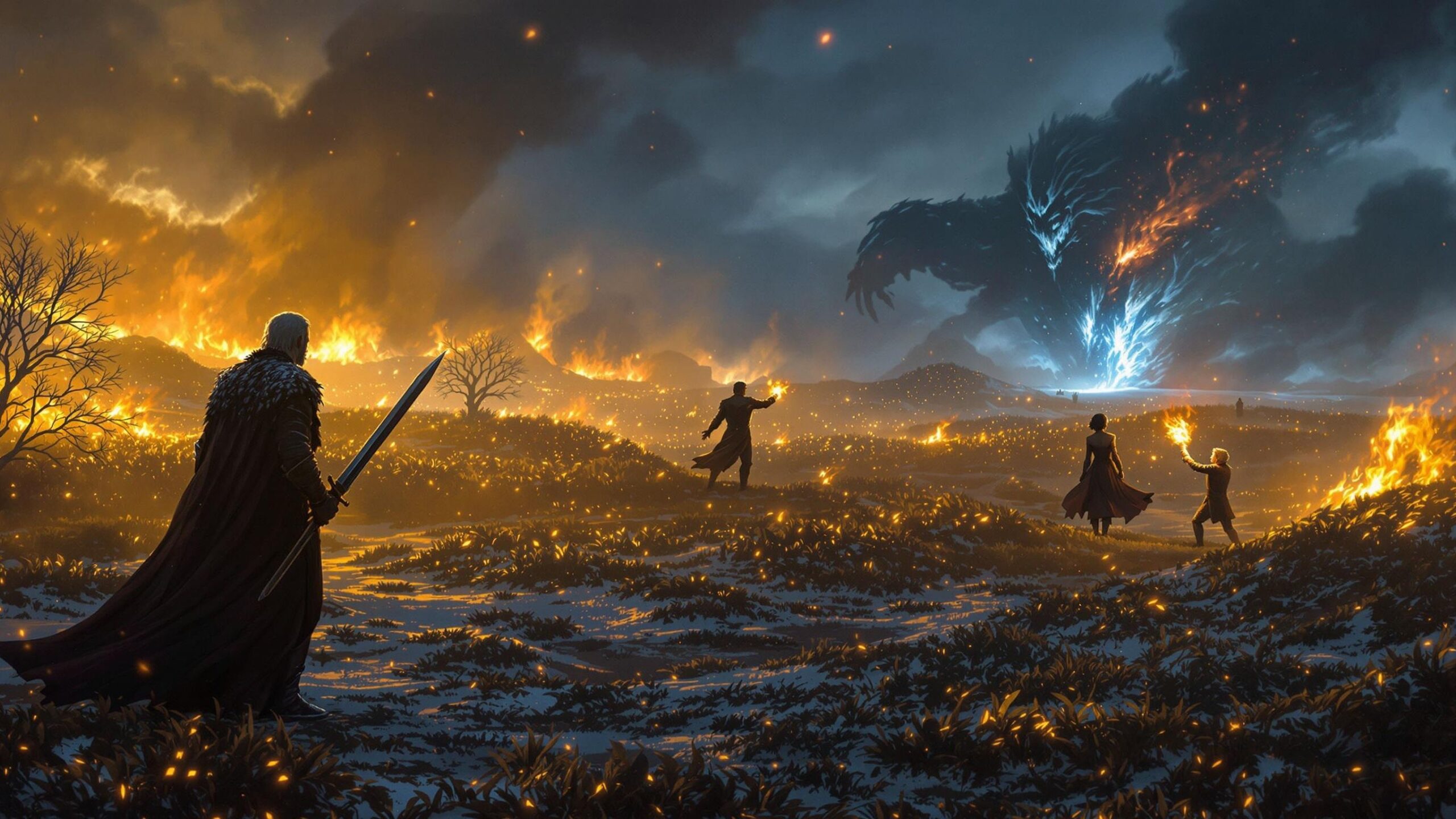Magic in Game of Thrones was never merely about flashy spells or mystical light shows—it was dark, primal, and often came at a terrible cost. Unlike traditional fantasy where magic is wondrous and noble, the world of Westeros and Essos portrayed it as something elusive, corrupted, and fueled by blood, fire, and sacrifice. While many characters tried to harness magic for noble purposes, its most memorable uses often veered into the sinister. Whether manipulated by shadowy sorcerers, ancient cults, or desperate rulers, these magical acts altered destinies and left trails of death, destruction, and despair in their wake. Below are the ten most sinister uses of magic in Game of Thrones, ranked by their dark power, haunting consequences, and narrative weight.
#10: The Faceless Men’s Magic of Identity Theft
The Faceless Men of Braavos are trained killers who worship the Many-Faced God, but what makes them terrifying is their use of magical masks—actual human faces—through which they assume new identities. This eerie sorcery goes beyond makeup or disguise; it’s a complete transformation of persona, voice, and appearance, blurring the line between self and illusion. Arya Stark’s training in the House of Black and White forced her to abandon her identity and embrace the cult’s ideology, making her grapple with whether becoming “no one” was worth the price of her humanity. The use of magic here wasn’t for show—it was for assassination and manipulation, and the soulless process behind it was as chilling as the deaths it enabled.
#9: Pyromancy and the Wildfire Explosion
Wildfire is one of the deadliest magical substances in Westeros, created by the alchemists of the Guild of Pyromancers. Its use in the Battle of the Blackwater was already devastating, but the true horror came when Cersei used it to obliterate the Great Sept of Baelor. Laced with magic and unpredictable in nature, wildfire burns with green flames and cannot be extinguished by water. Cersei’s decision to ignite caches hidden beneath the city, killing hundreds—including the High Sparrow, Margaery Tyrell, and Loras—was a display of magical destruction rooted in cold, calculated cruelty. The sight of green fire consuming the sept was haunting, not only for its sheer spectacle but for what it said about how far Cersei was willing to go.
#8: Blood Magic and the Death of Khal Drogo
One of the earliest and most disturbing uses of magic occurred when Daenerys sought to save Khal Drogo through Mirri Maz Duur’s blood magic. What began as a desperate attempt to heal a husband turned into a horrifying act of dark sorcery. Daenerys allowed a life to be taken—her unborn child—in exchange for Drogo’s survival, but the result was a cruel mockery: Drogo was left a catatonic husk. This act of magic didn’t just fail; it robbed Dany of her family, love, and innocence. The tent shrouded in screams, the lifeless Khal, and the cursed witch’s grin marked one of the show’s earliest warnings: magic always demands a price—and sometimes, it takes everything.
#7: The Resurrection of Beric Dondarrion
On the surface, bringing someone back from the dead might not seem sinister—but the way Thoros of Myr repeatedly resurrected Beric Dondarrion painted a more unsettling picture. Each time Beric was brought back by the Lord of Light, he returned less human—more fractured, hollower. He forgot pieces of himself with each death, including memories and sensations. Magic that tampered with death left its mark, and the notion of using divine power to resurrect warriors for endless battle echoed the cruelty of gods who toyed with mortals. Beric was less a man and more a vessel for divine purpose—a tragic figure whose humanity faded with every revival.
#6: Melisandre’s Shadow Baby Assassination
In one of the most disturbing displays of magic in the entire series, Melisandre used Stannis Baratheon’s seed and her own body as a vessel to birth a shadow demon that assassinated Renly Baratheon. This grotesque scene was shocking not just in its visual horror but in its implications. It was magic born of lust, ambition, and zealotry—used to snuff out a rival in the most unnatural way possible. The shadow’s silent glide through the tent, its resemblance to Stannis, and the swift, effortless kill all emphasized how magic could be wielded as a surgical, deadly tool. Renly’s men never had a chance, and his death changed the entire political landscape of the war for the Iron Throne.
#5: The Curse of Greyscale
Greyscale was more than just a disease—it was a slow-moving curse with magical roots, often linked to Valyria and its ruin. The transformation of the human body into stone-like, unfeeling flesh seemed like a physical metaphor for spiritual decay. While it could be spread through touch and feared as a death sentence, what made it sinister was its ability to isolate, disfigure, and dehumanize. Shireen Baratheon, who bore the scars of Greyscale and somehow survived, was living proof of magic’s cruel touch. For Jorah Mormont, contracting it became a death sentence until Sam’s brutal and risky surgery at the Citadel reversed it. The very existence of Greyscale hinted at ancient magical corruption that still festered in the world long after Valyria fell.
#4: The Wight Resurrection by the Night King
The Night King’s power to resurrect the dead with a simple gesture was perhaps the most terrifying magical ability in the entire series. Not only did it give him an ever-growing army, but it robbed victims of peace in death. Every fallen man, woman, and child became a weapon in his hands—mindless, relentless, and stripped of identity. The sequence where the Night King raises the dead at Hardhome, silently commanding a sea of corpses to rise, is one of the most chilling moments in the series. It turned death into a recruitment tool and showcased the unstoppable nature of the White Walkers’ threat. Magic here wasn’t used for enlightenment or healing—it was used to turn life into an instrument of annihilation.
#3: The Resurrection of Jon Snow
Though Jon’s resurrection by Melisandre might seem like a hopeful act, its sinister undertone lies in the power that made it possible. Melisandre had failed Stannis and lost her faith, yet somehow the magic of the Lord of Light worked through her hands to bring Jon back. The act itself was tinged with doubt, desperation, and eerie silence. Jon awoke gasping, confused, and burdened with a new purpose—almost as if he had been chosen by a god with unclear motives. Much like Beric, Jon’s return came with existential weight. He never fully spoke of what he saw in death, and the show left open the unsettling question: was Jon brought back as a champion of good, or a pawn in a divine game?
#2: The Sacrifice of Shireen Baratheon
No magical act in Game of Thrones was more horrifying and emotionally gut-wrenching than the burning of Shireen Baratheon. Convinced by Melisandre that the Lord of Light required king’s blood to ensure victory, Stannis allowed his only daughter to be burned alive. The scene was made worse by Shireen’s innocence, her screams, and the fact that her parents—especially her mother—realized too late the horror of what they’d done. And the cruelest part? It didn’t work. The weather cleared, but Stannis’s army was crushed, and his sacrifice was in vain. It was a moment that cemented just how vile and misleading magic could be when driven by blind faith.
#1: The Creation of the Night King
At the root of all darkness in Game of Thrones lay the Night King, and his origin was perhaps the most ironic and terrifying use of magic in the entire series. Created by the Children of the Forest as a weapon against mankind, he was born by plunging dragonglass into a man’s chest—an act that transformed him into something inhuman. What began as an act of magical defense spiraled into the creation of the ultimate destroyer. The Children themselves lost control of their creation, and the Night King became a force of nature—unfeeling, merciless, and apocalyptic. The irony that the oldest magic in Westeros was responsible for nearly ending the realm is a haunting reminder that even well-intended magic can become monstrous.
These dark uses of magic in Game of Thrones weren’t simply spectacle—they were reflections of power abused, faith twisted, and consequences ignored. They added a layer of horror to an already brutal world and served as a cautionary tale: in Westeros, magic isn’t a blessing—it’s often a curse dressed in mystery.




